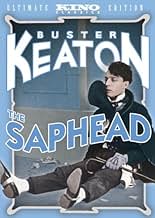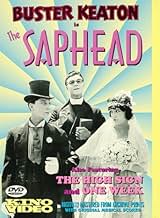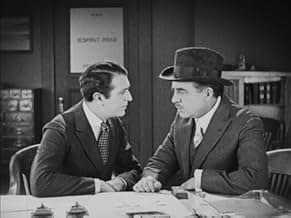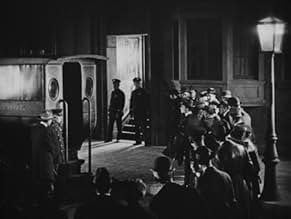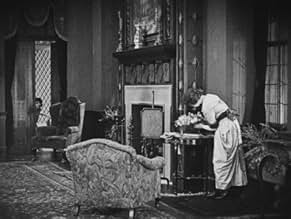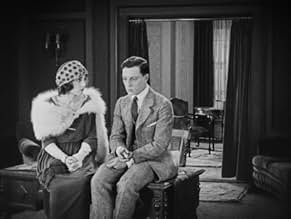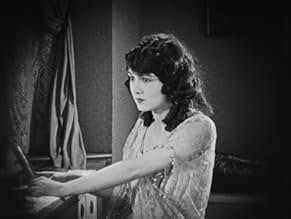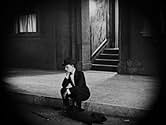NOTE IMDb
6,1/10
1,9 k
MA NOTE
Ajouter une intrigue dans votre langueThe simple-minded son of a rich financier must find his own way in the world.The simple-minded son of a rich financier must find his own way in the world.The simple-minded son of a rich financier must find his own way in the world.
- Réalisation
- Scénario
- Casting principal
- Récompenses
- 1 nomination au total
Katherine Albert
- Hattie
- (non crédité)
George Berrell
- Jim Hardy from Arizona
- (non crédité)
Henry Clauss
- Valet
- (non crédité)
Alfred Hollingsworth
- Hathaway
- (non crédité)
Helen Holte
- Henrietta Reynolds
- (non crédité)
Jeffrey Williams
- Hutchins
- (non crédité)
Avis à la une
"Saphead" is an awful romantic melodrama. Basically Keaton is just doing straight acting (the movie's based on a stage play). There is little comedy here.
But the 2 shorts included on the DVD -- "The High Sign" and "One Week" --are outstanding. They rate 8 and 9 scores, respectively. "One Week" anticipates many of Keaton's later gags and stunts, showing the kind of imagination and skill that made his films the funniest of the silent era (sorry, Charlie).
But the 2 shorts included on the DVD -- "The High Sign" and "One Week" --are outstanding. They rate 8 and 9 scores, respectively. "One Week" anticipates many of Keaton's later gags and stunts, showing the kind of imagination and skill that made his films the funniest of the silent era (sorry, Charlie).
Keaton plays a character that is somewhat bewildered by life-he meets the wrong train, he asks permission to quit winning at gambling, he is even inept in getting arrested. All is done with his deadpan expression and his intense eyes. This combination of innocence adrift in a life of circumstances provides Keaton with ample humorous moments. At times, I found the comedy to be somewhat muted; yet the pacing was well done and the stock market scenes are thoroughly delightful. `The Saphead' is not on a par with `The General', Sherlock, Jr.', or `Seven Chances', but the film has its share of riches for the viewer.
Before I watched "The Saphead" I was under the impression that it was a Buster Keaton comedy, rather than a straight drama that starred Buster Keaton. For the first twenty minutes or so I was rather confused by the lack of jokes but then after a quick Google search I figured out what was happening.
After I realised what the nature of the film was, I found it pretty enjoyable. It's nothing special but it also isn't totally forgettable. The story may not be totally original but it did have some interesting beats in it that I wasn't expecting.
Keaton does a really good job in this role, and he even gets some moments to show off his comedic talents to the audience (the most notable being the stock market scene, which gets some decent laughs).
So yeah, overall it's nothing special but it's a decent watch and the feature film debut of a comedy legend.
After I realised what the nature of the film was, I found it pretty enjoyable. It's nothing special but it also isn't totally forgettable. The story may not be totally original but it did have some interesting beats in it that I wasn't expecting.
Keaton does a really good job in this role, and he even gets some moments to show off his comedic talents to the audience (the most notable being the stock market scene, which gets some decent laughs).
So yeah, overall it's nothing special but it's a decent watch and the feature film debut of a comedy legend.
Something like The Saphead isn't what you would expect to be Buster Keaton's feature film debut. The whole thing seems too ordinary, too stagey and melodramatic to be so. This is due to the fact that The Saphead was not a Keaton-helmed project; he was suggested for the role of the rich young man Bertie by Douglas Fairbanks, who had previously played the role on Broadway.
Bertie is the first of the spoiled, clueless young man types that Keaton would later return to in The Navigator and Battling Butler. He seeks to impress a sweet young woman named Agnes by coming across as a bad boy, gambling well into the morning hours and having breakfast in the afternoon. His father confronts him about this behavior and has him cut off until he can find a job. Bertie seeks out to do just that, in the meantime winning the hand of his girl-- well, almost. During the ceremony, his sister's slimy husband Mark receives letters from his recently deceased mistress Henrietta, asking him to take care of their illegitimate child. His secret about to be revealed, he presses the letters on Bertie, breaking Agnes' heart and bringing the union to an abrupt end. Fortunately, things manage to pick back up after Bertie unwittingly saves the family stock business.
While there are a few Keaton-esque moments every now and then, for the most part The Saphead is just a typical stage to film adaptation of the period. Unlike the films Keaton would later star in and direct, this picture lacks spontaneity and laughs. The action on screen never comes alive until the climax, when Keaton finally gets to jump and be thrown around as he dashes through the trading floor and saves the day. The entire movie isn't a bore, however, and there are a few humorous inter-titles and gags, but it's just doesn't have a story that seems to suit the particular talents of its main star.
Bertie is the first of the spoiled, clueless young man types that Keaton would later return to in The Navigator and Battling Butler. He seeks to impress a sweet young woman named Agnes by coming across as a bad boy, gambling well into the morning hours and having breakfast in the afternoon. His father confronts him about this behavior and has him cut off until he can find a job. Bertie seeks out to do just that, in the meantime winning the hand of his girl-- well, almost. During the ceremony, his sister's slimy husband Mark receives letters from his recently deceased mistress Henrietta, asking him to take care of their illegitimate child. His secret about to be revealed, he presses the letters on Bertie, breaking Agnes' heart and bringing the union to an abrupt end. Fortunately, things manage to pick back up after Bertie unwittingly saves the family stock business.
While there are a few Keaton-esque moments every now and then, for the most part The Saphead is just a typical stage to film adaptation of the period. Unlike the films Keaton would later star in and direct, this picture lacks spontaneity and laughs. The action on screen never comes alive until the climax, when Keaton finally gets to jump and be thrown around as he dashes through the trading floor and saves the day. The entire movie isn't a bore, however, and there are a few humorous inter-titles and gags, but it's just doesn't have a story that seems to suit the particular talents of its main star.
'The Saphead' was Buster Keaton's feature film debut that made him real star and respectable as an actor. The film is based on Broadway play where Bertie Van Alstyne was played by Douglas Fairbanks, who declined the opportunity to reprise his role on big screen. Instead he recommended Buster Keaton for the role. Compared to best known Keaton's movies 'The Saphead' might feel little bit boring and slow because the film doesn't contain much of his usual breathtaking stunt work and elaborate action. Still, with his deadpan expression and perfect comedic timing Buster Keaton shines as the inept in life son of rich magnate Nicholas Van Alstyne (William H. Crane). The film itself is well paced and nicely balanced, but the most memorable scene is in the stock exchange where Bertie saves the day when he thinks that he is being insulted, and has no idea of his deed.
Don't go into this film with high expectations of action packed comedy and you find yourself entertained. Plus, you can see Buster Keaton's more serious side, and that side is equally enjoyable as his awesome physical comedy. Definitely must see film for all the admirers of the great 'Stone Face'.
Don't go into this film with high expectations of action packed comedy and you find yourself entertained. Plus, you can see Buster Keaton's more serious side, and that side is equally enjoyable as his awesome physical comedy. Definitely must see film for all the admirers of the great 'Stone Face'.
Le saviez-vous
- AnecdotesFeature-film debut of Buster Keaton.
- GaffesWhen Bertie's car pulls up to the house after the aborted wedding, the front gate is closed, but when he gets out of the car it is wide open.
- Versions alternativesIn 1995, Film Preservation Associates copyrighted a version with an orchestral score; no details were specified on the print.
- ConnexionsFeatured in Buster Keaton: A Hard Act to Follow (1987)
Meilleurs choix
Connectez-vous pour évaluer et suivre la liste de favoris afin de recevoir des recommandations personnalisées
- How long is The Saphead?Alimenté par Alexa
Détails
- Durée1 heure 17 minutes
- Mixage
- Rapport de forme
- 1.33 : 1
Contribuer à cette page
Suggérer une modification ou ajouter du contenu manquant

Lacune principale
By what name was Ce crétin de Malec (1920) officially released in Canada in English?
Répondre
